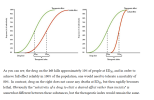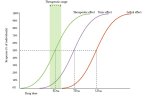The uncoupling of mitochondrial electron transport from oxidative phosphorylation (see Section 2.18.1) with resultant decreased production of ATP by 2,4-DNP appears to be related to the cataractogenesis of 2,4-DNP. The lens epithelium is the chief source of available energy for the lens (Kuck 1970). In most animals, the energy needs are met principally by anaerobic glycolysis, and <30% by oxidative phosphorylation. In incubated bovine lenses, oxygen was not necessary for maintaining sodium levels in the presence of glucose, suggesting anaerobic respiration in the lens (Trayhurn and van Heyningen 1971). Energy evolved from the breakdown of ATP by Na+/K+-activated ATPase is required for the transport of these cations across the lens epithelium to maintain proper ionic balance. Sodium is actively transported from the lens to the aqueous humor, while potassium is actively transported in the reverse direction. Interference with this active transport mechanism across the lens epithelium can result in increased sodium in the lens, disruption of the ionic balance between the lens and aqueous humor, and subsequent cataract formation. An in vitro study with rabbit lenses also demonstrated that 2,4-DNP does not cause calcium-induced cataracts by interfering with active transport of calcium from the lens, because the energy for calcium transport is derived from anaerobic glycolysis and not oxidative phosphorylation (Hightower and Reddy 1981).
Effects of 2,4-DNP on oxidative phosphorylation may be more important in the lens epithelial cells of humans, rabbits, and domestic birds (e.g., chicks and ducklings), as these species appear to be more susceptible to cataract formation after 2,4-DNP exposure (Kuck 1970). In domestic birds, cataracts occur almost immediately after exposure to 2,4-DNP and are reversible (Buschke 1947). However, in humans, cataracts can occur sometime after treatment is terminated and may not be reversible. This phenomenon has not been fully explained.









